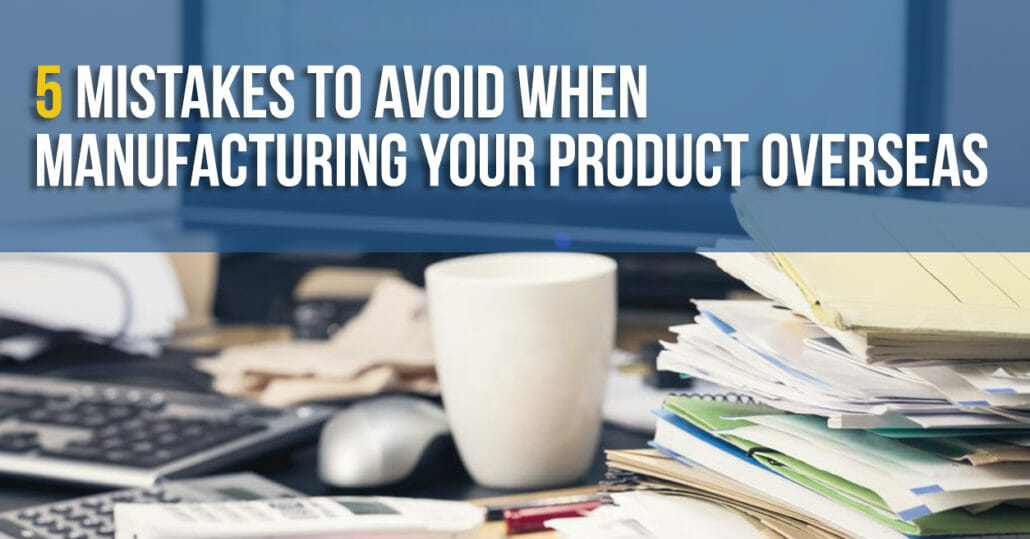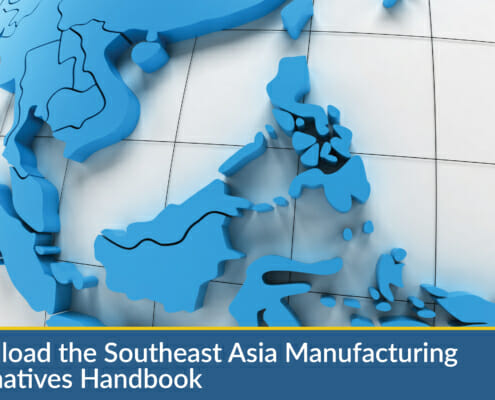
Thinking about outsourcing your manufacturing to a company overseas? While the pros of outsourcing do outweigh the cons, it’s not quite as simple as contacting a company and setting up a production agreement. There’s a lot that goes into outsourcing, and if you’re not careful, you can make a mistake that could cost your company a lot of money. Here are five of the most common mistakes business owners make when outsourcing.
1. Not Having a Strategy
You need to go into the outsourcing market with a plan. There are a lot of businesses in other parts of the world that will want you to work with them. If you don’t have a strategy for determining who you want to work with, you may partner with the wrong company. You need to have a plan for vetting manufacturers, measuring quality, maintaining quality, and how you’ll handle conflict with your partner. If you don’t have these standards in place, you won’t be able to fully describe your needs to manufacturers, which may make it hard to find a partner at all.
2. Not Using a Sourcing Agent
Many business owners who are new to the outsourcing industry don’t realize sourcing agents even exist. These people are experts in overseas manufacturing, and they do all of the hard work for you. They serve as the bridge between your company and the overseas manufacturing market. They have researched these manufacturers, know which ones would work best for you, and handle all of the negotiating on your behalf. You will pay them a small percentage of each project they handle for you, but they take on so much of the work that it’s worth it. Most of them even speak the native language, so you don’t have to worry about a translator.
3. Not Being Specific
When describing what you need from your overseas manufacturer, be certain you spell out every single detail. That includes everything from precise measurements to the quality of the materials you want to be used. Don’t simply say you want something to be painted red—state the exact color code. You have to be that specific, not just to make sure that the product you get is the same as the one you want, but to make certain you’re not assuming anything based on culture. Remember that what could go unsaid to an American manufacturer may need to be carefully explained to a manufacturer in another country.
4. Doing All Your Negotiating via Email
It’s tempting to do everything through email simply because of the time difference but resist the urge to do that. Instead, make use of video calls, especially during the early negotiating phase. Even if you’re using a sourcing agent to handle all of that, you still want to take the time to video chat with your manufacturer at least once before signing the final contract. This gives you a chance to see who you’re dealing with. You’re also likely to pick up on more of their character, too, and that can be important. Trust your instincts here—if the person you’re dealing with seems great on paper, but doesn’t seem quite right when talking to them face to face, you may want to move on.
5. Not Having a Cultural Expert on Staff
If you’re using a sourcing agent, this isn’t a problem—they’re going to understand the language and the culture of the country you’re outsourcing your manufacturing to. If you’re not working with a staffing agent, though, you’re going to want to make sure you have someone who speaks the native language and understands the culture. There are a lot of small errors you can make just by using the wrong word or by making a cultural misstep. Make sure to avoid these issues by having a knowledgeable person on your staff.
By avoiding these five common mistakes, you’ll be in a much better position to grow your business and expand while making use of overseas manufacturing.




Follow Us